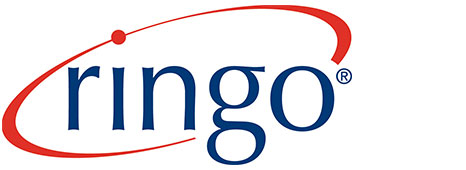5 Ways to Cut Staffing Costs While Maintaining Patient Care

Healthcare facilities must maintain adequate staff while simultaneously providing robust patient services. Understaffed hospitals and doctors’ offices curtail the provider’s ability to deliver services—which bring in revenue—and consequently, reduce the quality of patient care.
Healthcare facilities fill positions to retain a full staff to lower mortality rates, decrease hospital readmissions, and reduce worker fatigue. While most providers appreciate the opportunity to hire highly trained professionals to bolster their workforce, financial concerns may prove a hindrance. Incorporate some or all of the practices described below and you may soon find that maintaining sufficient staff levels doesn’t have to break the budget.
Consider these five ways to cut costs while maintaining high-quality care:
1. Limit or Eliminate Overtime
According to federal law, healthcare workers must be paid time and one-half the regular rate of pay if they exceed 40 hours in a seven-day workweek. Some facilities may pay overtime after eight hours in any one day or 80 hours in a 14-day pay period. A study that appeared in HealthAffairs, a peer-reviewed journal, concluded that approximately 40 percent of healthcare workers exceed their regular 12-hour shifts.
Moreover, when overtime goes unmanaged and reaches 10 percent of total hours worked, it can cost a 300-bed hospital an estimated $3 million annually. Properly managing overtime expenses and reducing overtime from 7.5 to 2.5 percent of total hours worked can save a hospital about $1.2 million.
For institutions looking to restrict overtime, enact a plan such as the one below.
- Log and review employee overtime: Use software and digital timesheets to track staff hours. Some programs can notify management when someone will go over their allotted hours.
- Cap hours: Create an overtime policy and convey new restrictions to employees.
- Create an overtime rotation: There may be days when an extra hand is needed, so overtime can be a solution. Placing staff on rotation allows everyone to take advantage of the extra pay without experiencing burnout.
2. Increase Retention and Reduce Turnover Rate
According to Training Magazine’s 2023 Training Industry Report, it costs an average of $954 to train a new employee. Because of the expense and time involved in onboarding new workers, it’s important to retain individuals.
Retaining a quality staff starts with the hiring process, which should include identifying the qualities of the desired candidates, developing a recruitment plan, implementing interview best practices, and using behavioral assessments.
Once the interview process is complete and you’ve hired the appropriate people, you must take the necessary steps to maintain them. According to a 2018 study examining burnout in the US among healthcare professionals, 51 percent of physicians experienced burnout, while medical residents reported an overall rate between 69 and 78 percent. For nurses, the rate of burnout is 15.6 percent overall, and 20 percent for emergency room nurses, according to the PRC National Nursing Engagement Report. A U.S. Department of Health and Human Services Agency for Healthcare Research and Quality project concluded fatigue is caused by time pressures, low control over the workplace, a chaotic environment, a poor organizational culture, lack of family-work balance, and increased administrative tasks.
There are ways to help your staff cope with work-related pressures. For instance, creating a collaborative and educational environment where professionals feel engaged and supported is key to a higher retention rate. This can be achieved by constantly reminding employees of expectations; encouraging staff to speak with management about challenges, changes, or problems; providing training opportunities; implementing flexible schedules; and supporting career development. Additionally, group exercises can also prove beneficial. Eduardo Salas, chair and professor of psychology at Rice University, co-authored a study that found team training simultaneously decreases turnover and contributes to a reduction in patient mortality and medical errors by 15 and 19 percent, respectively.
After hiring and maintaining a high-quality staff, you may need to re-evaluate employees who don’t meet goals or exhibit poor work behavior. Positions should be reevaluated, unnecessary jobs eradicated, and employees reassigned to duties that fit their credentials.
3. Streamline Employee Workflows
Simplifying employee workflows enables nurses, physicians, technicians, and other medical staff to spend less time completing administrative tasks and more time with patients. Healthcare organizations must focus on improving management, pairing employees to the job that best meets their skill set, and investing in technologies to increase efficiencies.
To streamline practices, implement these procedures:
- Ensure you are recruiting top talent.
- Start each day with a team meeting and establish short- and long-term expectations.
- Provide necessary resources such as efficient, up-to-date technology.
- Standardize order sheets for common procedures and conditions, patient information and instruction sheets, and the intake and discharge processes.
- Assign staff duties based on credentials. Specialists shouldn’t be performing simple procedures that can be handled by other health professionals.
- Identify remaining problems causing delays and implement solutions.
4. Hire Temporary Employees with a VMS
The Association of American Medical Colleges projects a shortage of between 46,900 and 121,900 physicians by 2032 and the American Journal of Medical Quality estimates 154,018 nursing positions will go unfilled by 2025. If a hospital or doctor’s office lacks adequate medical staff to perform surgeries, physicals, or other services, it loses profit. Also contributing to financial losses—and major impacts in their own right—are increased mortality rate, hospital readmissions, and employee burnout.
As both shortages loom, healthcare facilities will need to hire temporary physicians, nurses, and other personnel to fill departments. Hospitals and health systems can utilize a VMS, which simplifies order entry, submits requisitions to multiple vendors, enables review of submitted candidates and associate credentials, eliminates the paper timesheet process, consolidates billing invoices, manages payment services, and provides access to live reports.
Companies that have implemented Ringo have seen savings of up to 23% in staffing acquisition within the first year and 36 % in the second. Ringo's VMS has also diminished the time to fill a position by 53 % and freed up internal staff so they can instead focus on other tasks. Electronic credentialing alerts have made it simple to stay compliant and avoid costly errors.
5. Incorporate Supplemental Technologies
While technology can be expensive up front, it can reduce costs in the long run and increase efficiency, giving doctors and nurses more one-on-one time with patients.
The research organization Rand Corporation estimates the healthcare system could save billions of dollars annually if 90 percent of hospitals and doctors offices implemented health information technologies.
Invest in some of these technologies:
- Staff scheduling software saves management hours each week and reduces absentees.
- Predictive analytics tools improve business operations, accuracy of diagnosis and treatment, and cohort treatment.
- Automated vital sign monitoring and documentation follows changes in patient vital signs and detects deterioration, so nurses can focus on other aspects of care.
- Fall prevention and detection shortens stays and the accompanying costs.
- Bar Code Medication Administration (BCMA) systems verify a patient is given the correct medication, therefore, increasing precision and preventing prolonged stays.
- Cloud-based electronic health records (EHRs) maintain patient health files in a cloud-based system and eliminate the need for internal servers.



